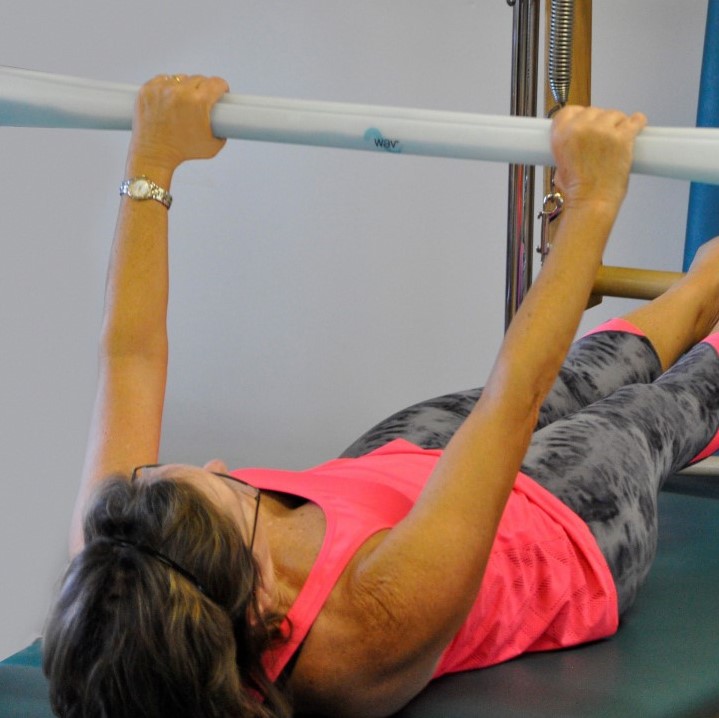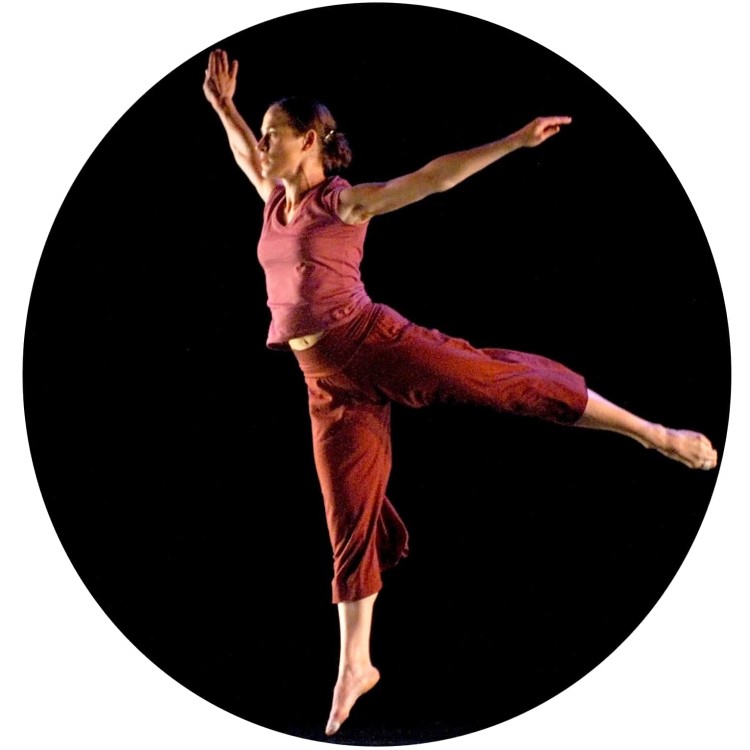Want to elevate your Pilates exercise experience? Use your senses!
Pilates exercises focus on bringing symmetry and flow to movement. What if you could get even more from each move?
Hey mindful movers! This month’s featured WAV move amplifies a powerful Pilates mat exercise with sensorimotor education. Anne-Lise, one of our WAV training pros, Pilates instructor and lifelong dancer takes you through this sensory enriched core stability move.
Life is a Stable Symphony
Life and activities of daily living are a symphony of integrated coordination of breathing, core stability and postural control. This innate ability to coordinate movement is a motor plan that all humans begin to integrate from birth through developmental kinesiology.
This philosophy is why Pilates movement gradually moves from supine, to prone, sidelying, kneeling and finishes in standing. Most times, we take for granted what the body is subconsciously coordinating, even throughout our daily activities.
How can we become more attentive to our senses and recognize the lack of symmetry and flow during a fitness session, like Pilates, or simply a walk through the park? First, we need to take notice of what we see, feel and hear. For example, imagine performing footwork on the reformer or leg pressing on a leg press machine. You know the body is integrated and controlled when the carriage/machine is quiet and smooth vs clashing in and out. You also may sense asymmetry when performing Pilates exercises like the Ab Series of 5 or a simple core stability program in rehab--checking in to notice if lifting one leg or one arm is easier or harder than the other. You may have noticed it, but did you every question why? It may not only be a muscle weakness, but a sensory “weakness” to coordinate smooth, controlled movement.
Fluid Stability-The Paradigm Shift
Joseph Pilates approached exercises as an integrated whole, not working the body as a bunch of independent parts. He started the paradigm shift for strength and resistance type training with his philosophy that “It is the mind itself which builds the body”.
“A few well-designed movements, properly performed in a balanced sequence, are worth hours of sloppy calisthenics or forced contortion.”
He encouraged his students to use their mind to focus attention on the core postural muscles that help keep their spine supported and their bodies balanced. It is a method he coined as contrology, the “... complete coordination of body, mind, and spirit. Through Contrology you first purposefully acquire complete control of your own body and then through proper repetition of its exercises you gradually and progressively acquire that natural rhythm and coordination associated with all your subconscious activities." This remains as the foundation for most Pilates practices today.
Understanding that stability is dynamic and integrates the brain-body connection to promote natural mechanics, think of the possibilities you can train progressively in the Pilates environment or in rehabilitation.
Sensible Movement
Using your senses during a movement training experience nurtures your innate core stability and postural integration. Our every movement is guided by sensory input. Accounting for this in our training extends the “body, mind, spirit” of a Pilates workout to include our brain for a broader integrated movement experience. Incorporating the WAV Sensorimotor Trainer into Mat, Chair and Reformer based Pilates choreography, promotes the brain-body connection and integrates the developmental kinesiology behind all movements. Like the tower or reformer you receive immediate feedback and gain awareness of imbalances. Unlike any other Pilates props or equipment the WAV provides more extensive sensory engagement to develop fluid coordinated movement and an enhanced sense of proprioception.
This month’s move is the Sensory Core Warm Up. It introduces the brain-body exploration using vision, tactile senses and hearing to stimulate core stabilization without over cueing or picking at what movement “should” look and feel like.
Step One
Single Leg March with Triple Flexion
Begin lying on your back with your knees bent and feet aligned with your sitz bones to achieve a “newborn to three month position”.
Hold the WAV with an overhand grip and extend your arms to the ceiling. Keep the WAV logo over your chest.
Find neutral spine with evenly weighted head, shoulders, and pelvis. HINT: You may need a small pillow under your head to comfortably support your neck and throat.
Lift your right leg to a triple flexion position. Triple flexion means to maintain 90 degree angles at the hip, knee and ankle to promote joint centration.
Slowly lower the leg and return to center.
Repeat with the other leg.
Repeat steps 4 through 6 two times.
What am I doing?
The “newborn to three month position” works spinal stability; coordinates breath control and improves posture.
What am I mindful of?
Did my pelvis rock or shift while lifting the leg?
Do the movements feel relaxed and calm?
Step Two
Double Leg Lift with Triple Flexion
Maintain the “newborn to three month position”.
Lift both legs at the same time to triple flexion position.
Slowly lower the legs as far as you can maintain your center/neutral.
Repeat two times.
Maintain smooth movement control as you come back to an upright sitting position.
What am I doing?
Coordinating abdominal stability with hip mobility
Improving dynamic stabilization
What am I mindful of?
Am I maintaining a neutral spine?
Did I hold my breath to lift the legs?
Did the WAV shift at the start or end of my movement?
Did my hips stay relaxed to move?
Pilates Déjà vu
If you have tried or teach Pilates, you are used to the surprising challenges that surface from seemingly simply exercises. This will undoubtedly be the case with the WAV so don’t feel discouraged. You will soon find yourself improving and realizing the benefits of improved motor patterning through sensory integration.
We love talking Pilates and integrated movement. Reach out to us to discover more ways to integrate the WAV into your Pilates practice.
There is a rich history for Joseph Pilates and “contrology” as well as numerous studies investigating the benefits of Pilates. Here are just a few:
- Biography of Joseph Pilates, Exercise Pioneer
- The effects of Pilates-based exercise on dynamic balance in healthy adults, Journal of Bodywork and Movement Therapies
- Transversus abdominis activation and timing improves following core stability training, a randomized trial, International Journal of Sports Physical Therapy





